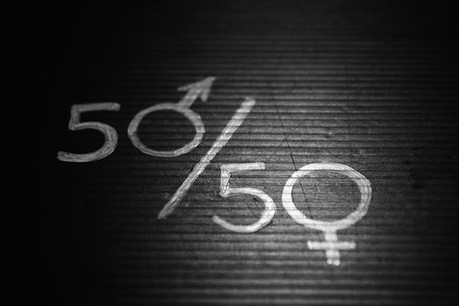
The issue of diversity in the media has been placed under a spotlight as leaders in news organisations have become more aware of how representative (or not) their editorial teams are.
A number of journalists have also become more proactive in keeping track of how often they quote men compared to women in their work.
A study commissioned by the Global Institute for Women’s Leadership at King’s College London looked at the gender balance of expert sources quoted in stories published online by leading UK media outlets over a week in April, and found that 77 per cent of the people quoted as experts were men.
The analysis, published on 17 July, broke down the figures by the subject of the stories, grouping them in eight categories.
For stories on social policy, for example, the figures showed 52 per cent of expert sources were men, compared to 48 per cent who were women.
But for subjects such as business (86 per cent men; 14 per cent women) and foreign politics (87 per cent men; 13 per cent women), the figures highlight a significant under-representation of women in the media.
The study looked at 1,112 articles and identified 1,825 expert sources in total.
"These figures are disheartening. While it is true that women are underrepresented in roles where they might be considered experts, we would encourage news outlets to be more proactive in seeking female experts to ensure a range of voices are heard," said Laura Jones, research associate at the Global Institute for Women’s Leadership, in a press release.
At the Women in News Summit in Portugal in June, media leaders discussed initiatives for promoting staff diversity in their own organisations.
Having a newsroom that reflects a media organisations’ target audience was deemed to be a ‘business imperative’. And most initiatives start with having a clear grasp of the numbers.
The good news is that editors and journalists have started looking at the numbers, but much like the results of the study by the Global Institute for Women’s Leadership, these metrics don’t paint a rosy picture.
Back in 2016, Motherboard looked at gender inequality in technology, starting in its own newsroom. It analysed 115 stories published over a week, and found that the editorial team mentioned 217 men and quoted 112 of them, compared to 52 women mentioned and 26 quoted.
At The Atlantic, science journalist Ed Yong wrote about how he has been working to address the gender bias he found in his own reporting. He first started counting in 2016 and was surprised to find out that his numbers were similar to the industry average: men outnumbered the women by a ratio of around 3 to 1.
"I knew it wasn’t going to be 50 percent, but I didn’t think it would be that low, either. I knew that I care about equality, so I deluded myself into thinking that I wasn’t part of the problem. I assumed that my passive concern would be enough. Passive concern never is," he wrote in February.
So how does Journalism.co.uk compare? We have dedicated plenty of words to covering diversity in media and sharing platforms and tips that might help other news organisations along the way to becoming more representative. But what picture does our site tell?
We counted the number of times we have quoted women and men in our stories in 2018, from January until 27 July.
As there is no set methodology to refer to in order to do this to an industry standard, we settled for the following system:
- the focus was on text-based stories, disregarding videos and podcasts;
- only direct quotes were counted, and an expert source was counted as ‘one instance’ regardless of the length of the quote in the story.
The stories had to be published in the 'media news' section, where the vast majority of our text-based articles are published, and quote at least one person directly to be counted.
Stories published in our ‘tip of the day’ section were excluded, as well as most reviews of tools or apps as they often do not feature direct quotes.
How did we do?
In 110 stories that fit this criteria, women were quoted 81 times (53 per cent) and men were quoted 72 times (47 per cent).
Further analysis is required to see how many of these experts appear in more than one story – so to what extent we rely on the same contacts repeatedly.
These figures are encouraging for Journalism.co.uk, but they are perhaps not surprising.
The editorial team has been comprised entirely of women in 2018, although we have had men contributing stories occasionally, as well as female freelancers.
How about your stories? Let us know of diversity initiatives in your newsroom by tweeting us at @journalismnews.
Free daily newsletter
If you like our news and feature articles, you can sign up to receive our free daily (Mon-Fri) email newsletter (mobile friendly).
Related articles
- Ethics, diversity, influence and digital transformation: 10 trends to watch in UK journalism
- How journalists can cover LGBTQ+ stories, with Enrique Anarte Lazo of Context
- Understanding and serving the neurodiverse community, with Nick Ransom
- Coverage of women: America is failing. The world is stalling
- 20 trailblazing women in journalism











